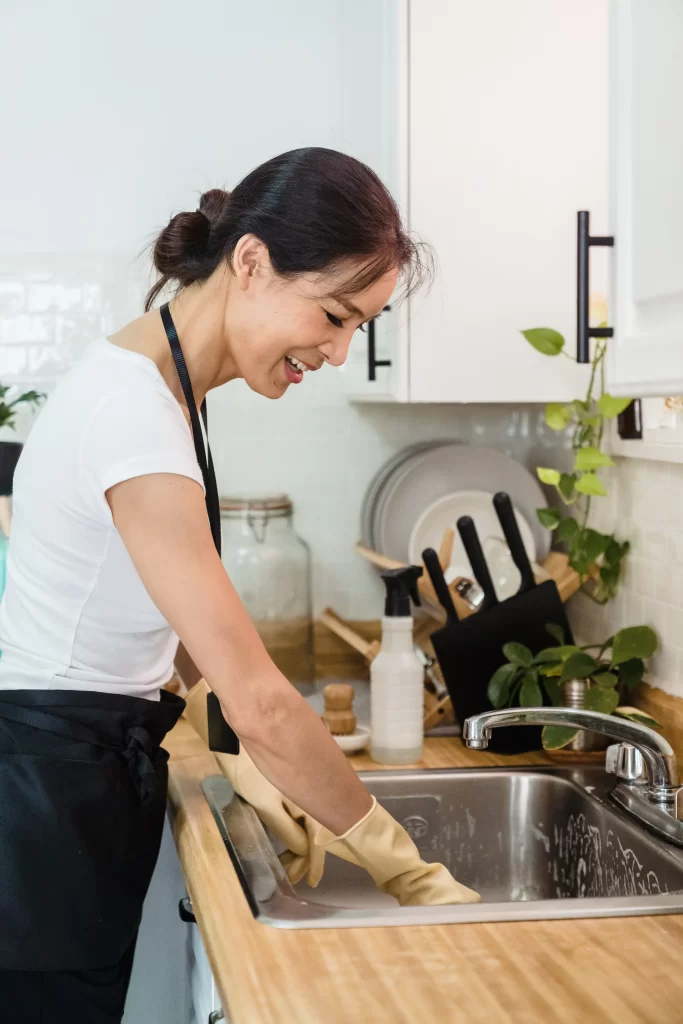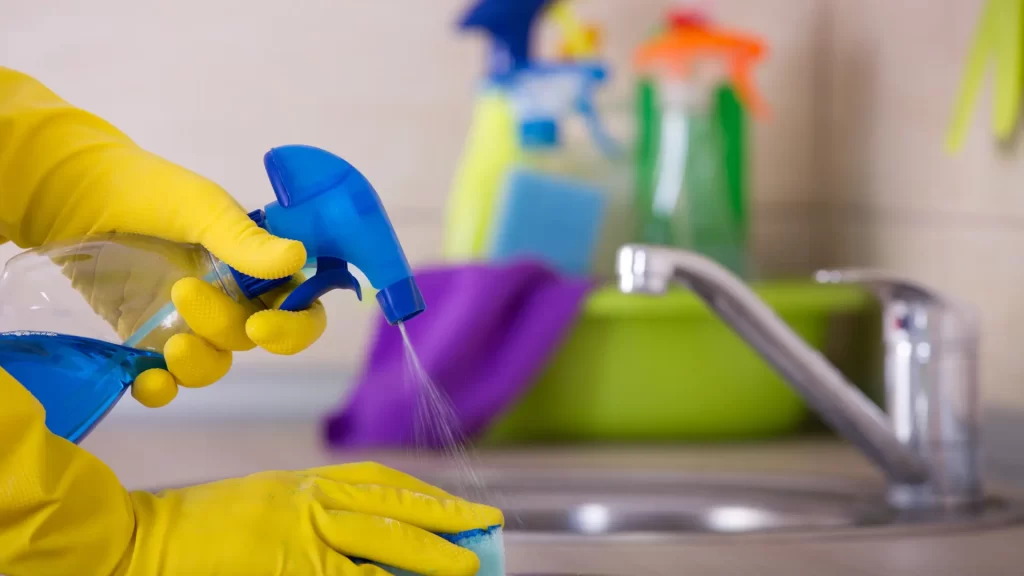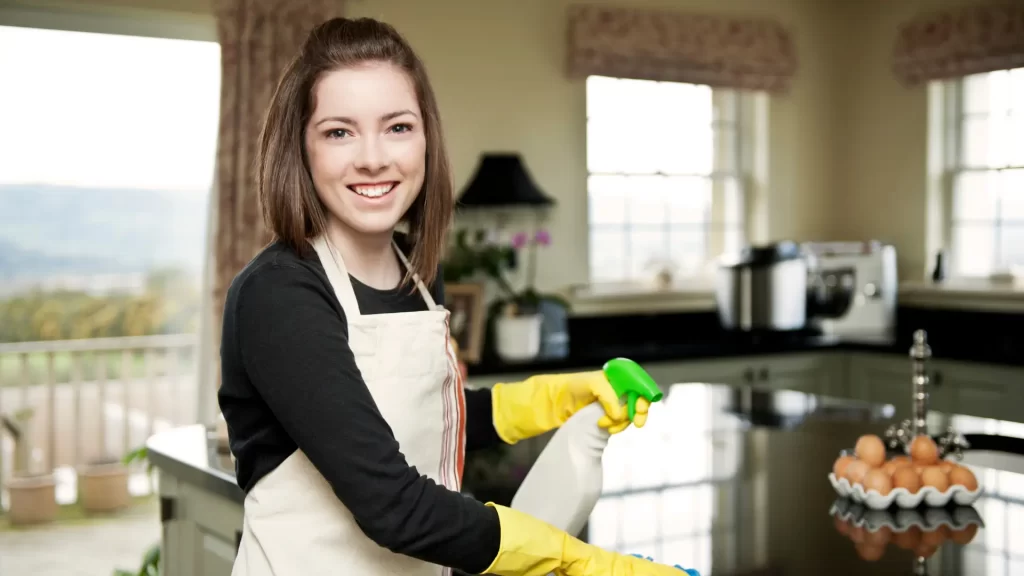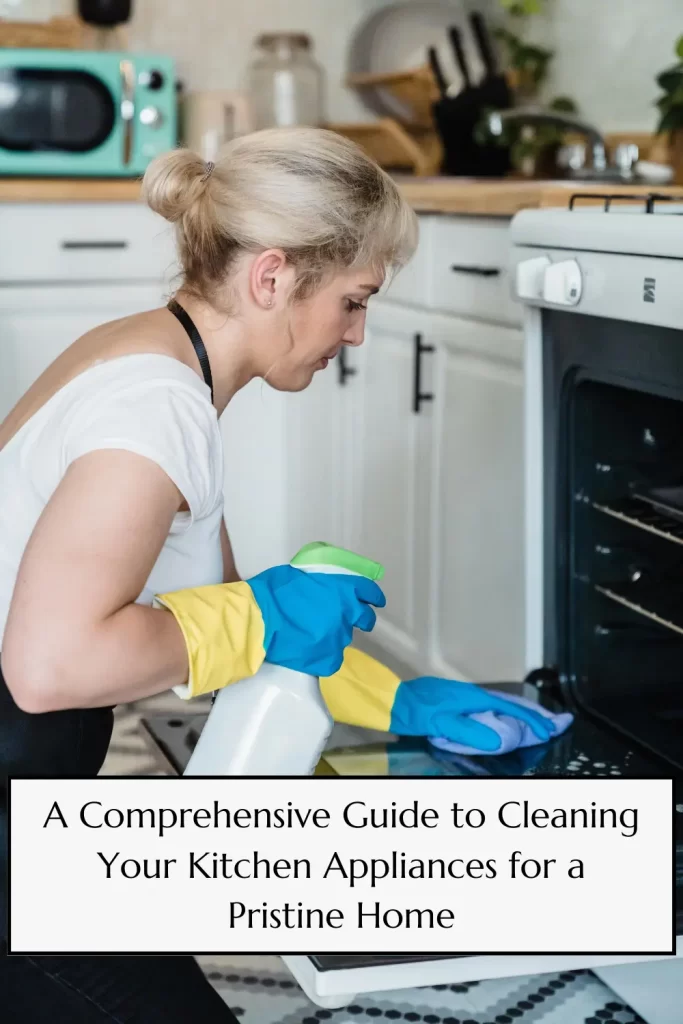A clean kitchen is a happy kitchen, and keeping your appliances in top-notch condition is crucial to maintaining a spotless home. With constant use, kitchen appliances such as ovens, refrigerators, and dishwashers can quickly become dirty and grimy, not only affecting their performance but also posing a potential health hazard. Fortunately, with the right approach and tools, cleaning your kitchen appliances can be a breeze.
In this article, we’ll explore some of the best practices for cleaning your high-end kitchen appliances, providing you with tips and tricks to keep your appliances sparkling and hygienic. Whether you’re a seasoned homemaker or a novice cook, our guide will help you transform your kitchen appliances into shining examples of cleanliness. So, let’s roll up our sleeves and dive into the world of kitchen appliance cleaning!
Our Cool Guide to Fridge Cleaning
A job that we all dread doing but one that is so worth it when it’s over, cleaning out the fridge is an awful job! Well, I kind of secretly like it… until you get to the drawers and then it seems like it’s never ending… then there is the freezer situation haha. So, let’s get rid of the mystery stains and moldy oozing cucumbers!

Step 1: Empty out the fridge! Start by removing all items from the fridge and placing them on the counter. This will allow you to see everything you have and help you identify any items that are expired or need to be thrown away. You can also do this shelf by shelf if you don’t want items sitting out for too long.
Step 2: Remove shelves and drawers. Take out all removable shelves and drawers from the fridge. This will allow you to clean them separately and thoroughly. Again, you can choose to do this one at a time…. Just be aware you MAY have to do a couple at a time.
Step 3: Clean shelves and drawers. Wash shelves and drawers with warm soapy water and rinse them clean. For tough stains, you can use a mixture of baking soda and water to scrub away grime. You could also try Bar Keepers friend if you need a little extra oomph.
Step 4: Clean the interior of the fridge. Use a sponge or cloth to clean the inside of the fridge, paying special attention to the corners and edges. The walls, the doors, the side of the doors. The bottom that inevitably always catches things you have no idea how they spilled. For tough stains, you can use a mixture of equal parts water and vinegar to wipe them away.
Step 5: Wipe down the exterior. Wipe down the exterior of the fridge with a damp cloth, being sure to clean the handles and any other areas that may have collected dirt and grime.
Step 6: Return shelves and drawers Once the fridge is clean and dry, put the shelves and drawers back in their proper place. Or again, dry and replace as you go.
Step 7: Sort and organize. Before returning items to the fridge, sort through them and get rid of any expired or spoiled food. Give the bottles a little clean off too. Then, organize the remaining items by category or by the order in which they will be used.
Step 8: Return items to the fridge. Finally, place the items back in the fridge, being sure to leave enough space for air to circulate and for the fridge to function properly.
By following these simple steps, you can keep your fridge clean and organized, ensuring that your food stays fresh and safe to eat.
Here are our top five cleaning products for fridge cleaning:
Baking Soda: Baking soda is a natural and effective cleaner that can help remove tough stains and odors from your fridge. Mix it with water to make a paste and use it to scrub away stubborn grime.
White Vinegar: White vinegar is a versatile and affordable cleaner that can be used to clean your entire fridge, from the shelves to the interior walls. It can also help eliminate unwanted odors.

Dish Soap: A mild dish soap can be used to clean your fridge and remove any spills or stains. It’s gentle enough to use on all surfaces and won’t leave any residue behind.
Microfiber Cloths: Microfiber cloths are a great choice for cleaning your fridge because they are gentle and won’t scratch the surface. They also absorb moisture well and can help prevent streaks.
Glass Cleaner: If you have glass shelves in your fridge, a glass cleaner can help remove any fingerprints or smudges. Be sure to choose a cleaner that is safe for food contact surfaces.
There’s a Product for Everything!
Cleaning smaller appliances can be a breeze with the right tools and techniques! Whether you’re whipping up a delicious smoothie in your blender or cooking up crispy snacks in your air fryer, it’s important to keep these appliances clean and functioning properly. To make cleaning a cinch, consider investing in a set of specialized cleaning brushes, like ones designed for removing buildup in blender blades or getting into hard-to-reach corners of your air fryer. You can also use gentle cleaning solutions like vinegar and water or baking soda and water to remove stubborn stains and grime. With a little bit of effort, you can keep your small appliances looking and working like new, making your time in the kitchen more enjoyable than ever!
- For a waffle maker that’s seen a few too many brunches, grab some Griddle Master. It’ll easily remove any batter, grease, or stubborn food residue. Plus, it keeps your non-stick surface in top shape. Just spray the cleaner on the plates, let it sit for a few, and wipe it clean with a damp cloth. Easy peasy waffle squeezy!
- Got an air fryer that’s seen better days? No worries, Easy Off is here to save the day. This specially-formulated cleaner removes food residue and grease from both the interior and exterior of your air fryer, all while preventing any unpleasant odors. Simply spray it onto a soft cloth and wipe away any gunk. Your air fryer will be back to its crispy, delicious self in no time.
- If your microwave is starting to smell like leftover lasagna, it’s time to break out Angry Mama. This little lady removes any food residue, grease, and odors, all while keeping your microwave smelling fresh. Just fill it with a microwave-safe cleaner, heat it up for a few minutes, and wipe clean with a damp cloth. Your microwave will be so clean, you could eat off it (though we don’t recommend it).
- Does your stovetop look like a battlefield after a week of cooking? Weiman Stove Top Cleaner to the rescue! This cleaner is specifically formulated to remove burnt-on food residue, grease, and stains from your stovetop, leaving it looking brand new. Just drizzle it on the surface of your stovetop, let it sit for a few, and wipe it clean with the special tool and polishing pad. Say goodbye to burnt-on spaghetti sauce and hello to a sparkling stovetop.

Kitchen Cleaning Heroes
Here are some of our favorite cleaning products for kitchens and how and when to use them:
All-Purpose Cleaner: An all-purpose cleaner is a versatile cleaning product that can be used to clean a variety of surfaces in your kitchen, such as countertops, sinks, and stovetops. You can use it on a daily basis to wipe down surfaces and remove spills and stains. Look for a cleaner that is safe for the surfaces you’ll be using it on.
Disinfectant Wipes: Disinfectant wipes are a convenient and effective way to quickly clean and disinfect high-touch surfaces in your kitchen, such as doorknobs, handles, and light switches. They are also great for wiping down your countertops after food preparation. Look for wipes that are EPA-approved and labeled as effective against viruses and bacteria.
Oven Cleaner: An oven cleaner is a specialized cleaning product that is designed to remove grease and baked-on food from the inside of your oven. It’s typically used once a month or as needed to keep your oven clean and functioning properly. Be sure to follow the instructions on the label and use gloves and a mask when applying the cleaner.
Grease-Cutting Cleaner: A grease-cutting cleaner is a specialized cleaning product that is designed to cut through tough grease and grime on surfaces like range hoods, stove tops, and ovens. These cleaners are typically more powerful than general purpose cleaners and may require a bit more elbow grease. Be sure to follow the instructions on the label and use gloves and a mask when applying the cleaner.
Stainless Steel Cleaner: If you have stainless steel appliances or surfaces in your kitchen, a stainless steel cleaner can help remove fingerprints, smudges, and other marks. Be sure to choose a cleaner that is safe for food contact surfaces and follow the instructions on the label.
Multi-Surface Cleaners: Multi-surface cleaners are designed to clean a variety of surfaces in your kitchen, including countertops, sinks, and appliances. They are a great option if you don’t want to use multiple cleaners for different surfaces. Look for cleaners that are safe for the surfaces you’ll be using them on and that leave a pleasant scent.
Natural Cleaners: Natural cleaners are a popular choice for people who prefer eco-friendly and non-toxic cleaning products. You can find natural cleaners that are specifically designed for use in the kitchen, such as those made from ingredients like lemon juice, vinegar, or baking soda. They are safe for use around children and pets, but may require a bit more effort to achieve the same level of cleaning as conventional cleaners.
By using these best selling cleaning products, you can keep your kitchen clean and hygienic, ensuring that it remains a welcoming space for you and your family to enjoy.
Overall, keeping your kitchen clean is not only important for maintaining a hygienic and safe environment, but it can also help you feel more organized and at ease in your home. With the right tools and cleaning products, you can tackle even the toughest kitchen cleaning tasks with ease. Whether you opt for natural cleaners, specialized products like the Scrub Daddy, or trusted all-purpose cleaners, taking the time to regularly clean and disinfect your kitchen will pay off in the long run. So why not take a few minutes each day to keep your kitchen sparkling clean? Your family and your taste buds will thank you.


